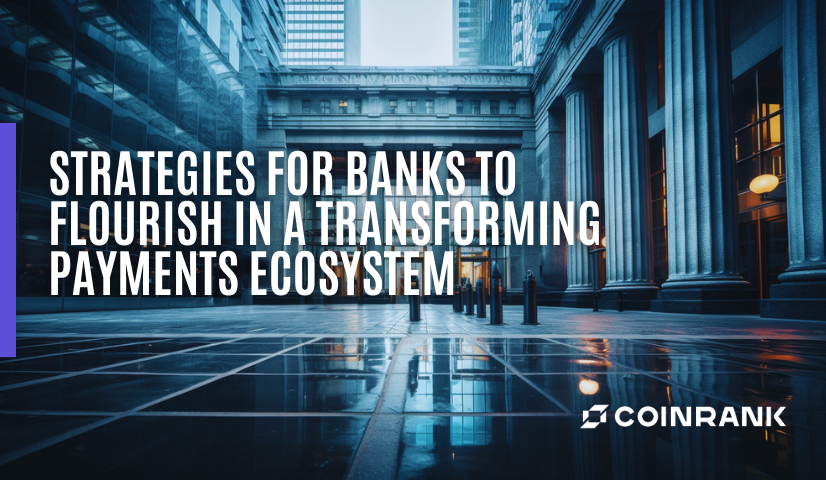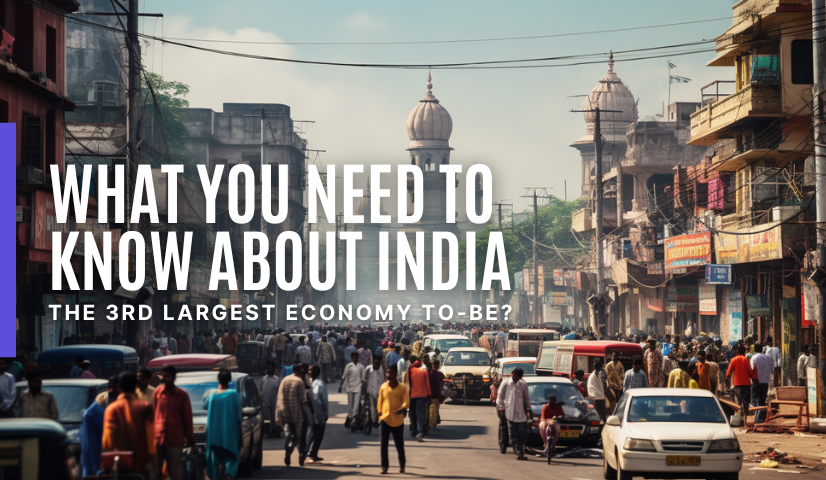
KEYTAKEAWAYS
- To stay competitive in the changing payments sector, banks are compelled to innovate, aligning with the heightened expectations of customers and vying for position against FinTech and Big Tech giants.
- Escalating regulatory and standardization expenditures are increasingly encroaching upon substantial portions of IT budgets, constraining banks' capacity to allocate resources towards necessary innovations.
- Banks partnering with peers and allies to boost profitability can secure funding for vital innovations, ensuring long-term relevance and success.

- KEY TAKEAWAYS
- CHALLENGES AND OPPORTUNITIES FOR TRADITIONAL BANKS
- IN THE FACE OF A RAPIDLY SHIFTING LANDSCAPE
- CHARTING THE PATH TO PAYMENT REVOLUTION
- REVAMPING PAYMENT PLATFORMS: THE KEY TO EXPANDING TOP-LINE REVENUES
- INDUSTRY COLLABORATION: TRANSFORMING STANDARDS AND TRIMMING COSTS
- STRATEGIC INNOVATION: PAVING THE WAY FOR A SUSTAINABLE FUTURE
- KEY FACTORS TO KEEP IN MIND AS MOVING FORWARD
- CONCLUSION
- DISCLAIMER
- WRITER’S INTRO
CONTENT
CHALLENGES AND OPPORTUNITIES FOR TRADITIONAL BANKS
In the fast-paced arena of payments, banks find themselves grappling to keep up with the rapidly evolving landscape. Agile FinTech and Big Tech rivals have seized customer and merchant relationships by offering personalized, data-driven experiences and adopting digital-first business models seamlessly integrating payments into the fabric of ecosystem journeys.
For traditional banks, staying in stride with developments like peer-to-peer payments, digital wallets, or embedded finance has become an imperative strategic necessity. Looking ahead, innovations such as central bank digital currencies (CBDCs) hold the potential to reshape the landscape, offering growth prospects to banks with the right value propositions.
Established players acknowledge the need to scale up to remain competitive. However, they face constraints in terms of resources and funding. Additionally, they confront the pressing need to shore up profitability in the face of intense competition and the rising costs associated with regulatory compliance. Striking a balance between these demands while constructing a pertinent and sustainable business model presents a formidable challenge.
The research has indicated that a comprehensive and collaborative approach proves most effective in addressing this challenge. To muster the requisite resources, banks can leverage open banking models and introduce innovative products to bolster top-line revenues. Simultaneously, embracing payment networks and shared infrastructures can help mitigate the escalating regulatory and compliance costs.
The ultimate objective is to channel these profits towards investments in innovative technologies and capabilities that will ultimately define their future success. The onus remains on banks to navigate this evolving landscape successfully, but they must act with urgency to adapt their strategies, business models, and technological infrastructure to thrive in the burgeoning payments environment.
IN THE FACE OF A RAPIDLY SHIFTING LANDSCAPE
The global payments sector, a colossal industry projected to exceed $3 trillion by 2026, appears to offer unparalleled opportunities, particularly for banks. Payments constitute a substantial 40% slice of global banking revenues, and their role in facilitating transactions is pivotal in attracting and retaining customers.
However, amidst this potential lies a formidable set of challenges. Regulatory and standardization expenses are devouring increasingly substantial portions of banks’ IT budgets, leaving limited financial resources available for innovation. Meanwhile, nimble FinTech competitors, unburdened by legacy systems, continue to push the boundaries of innovation. For instance, PayTech giant Stripe is harnessing the capabilities of OpenAI’s ChatGPT-4 to provide swift answers to natural-language queries, expediting the development process for its clientele.
These are the parameters of fierce competition, one where banks lagging behind may experience adverse consequences. In a recent survey conducted by Capgemini, a staggering 74% of executives acknowledged that their IT budgets prioritize the maintenance of legacy systems over fostering innovation. It is therefore unsurprising that 40% of respondents reported that their payments divisions exhibited slight to significant unprofitability, while merely 32% cited moderate to high levels of profitability.”
CHARTING THE PATH TO PAYMENT REVOLUTION
While banks possess inherent advantages in this competitive landscape, such as robust balance sheets, extensive customer data, and regulatory prowess, the linchpin for success frequently involves wholeheartedly embracing novel technologies and business paradigms akin to those championed by FinTech enterprises.
Here, we delve into three pivotal domains where banks can ignite innovation and secure their relevance in the forthcoming years.

REVAMPING PAYMENT PLATFORMS: THE KEY TO EXPANDING TOP-LINE REVENUES
In today’s payments landscape, the paramount factor is the user experience. Customers now demand payments that seamlessly integrate into their daily lives, an era aptly referred to as Payments 4.X. They anticipate transactions that are unobtrusive, interconnected, and virtually invisible, entailing a seamless journey within their digital ecosystems. Furthermore, they’re on the lookout for cutting-edge value-added services like real-time payments and buy-now-pay-later (BNPL) options.
For banks driven by a hunger for revenue, these services represent far more than mere sales opportunities. Consider, for instance, institutions equipped with real-time payment capabilities; they can harness this technology to generate real-time data analytics, a valuable asset for enhancing customer engagement and personalization.
Among the banking community, many have already charted a course toward their desired destination. According to our recent survey, 55% of bankers have ranked the modernization of payment platforms, with features like real-time payments, API integration, and cloud utilization, as top-priority innovations. Moreover, a notable 52% are contemplating the adoption of third-party products and solutions, while 45% are strategizing around API-based ecosystems and platform-driven business models to ensure their continued relevance.
The provision of seamless and personalized payment experiences has evolved into a gateway for cultivating customer loyalty, expanding market share, and elevating top-line revenues.
INDUSTRY COLLABORATION: TRANSFORMING STANDARDS AND TRIMMING COSTS
In the pursuit of streamlining financial transactions, the synchronization of payment systems across regional networks or shared infrastructures emerges as a catalyst for enhanced efficiency, particularly in the wake of new regulatory and standardization protocols such as PSD2 and ISO 20022 .
A noteworthy case in point is the Euro Banking Association (EBA), a regional consortium that, in partnership with EBA Clearing—a processor jointly owned by 48 banks—has played a pivotal role in aligning cross-border standards. The overarching objective: expediting payments while reducing associated costs.
In tandem with various other regional entities, the EBA has laid the groundwork for technological and operational resources. Among these notable advancements are the establishment of a pan-European retail payments clearing house and the creation of an instant payments network. These endeavors empower banks to craft distinctive payment solutions at a diminished expenditure.
Remarkably, similar initiatives are gaining momentum in other corners of the globe. Paradoxically, incumbent financial institutions that engage in these cooperative ventures stand to bolster their competitive edge, even as they collaborate with erstwhile rivals.
STRATEGIC INNOVATION: PAVING THE WAY FOR A SUSTAINABLE FUTURE
To achieve a grand objective, the banking industry is set to transmute additional profits into enduring innovation and sustainable business paradigms. This transformation is propelled by digital ledger technologies, with Central Bank Digital Currencies (CBDCs) emerging as the vanguard of the next wave of innovation, demanding proactive responses from established players.
Currently, 114 central banks are engaged in exploring CBDCs, with 11 having already fully launched their own digital currencies. This collective endeavor signifies the dawn of a new era for banks, one poised to lay the groundwork for a renaissance in product innovation and enriched customer experiences.
CBDCs hold the promise of reducing transaction costs, amplifying financial inclusion, fortifying security, and accelerating the pace of payments. Among their most auspicious applications on the retail front is the ability to facilitate real-time, cross-border peer-to-peer payments.
At the wholesale level, CBDCs wield the potential to empower banks to extend trade finance products to expansive customer bases interconnected by trade and supply chain ecosystems. Moreover, they stand to be instrumental in creating value in areas like cross-border treasury management and global custody.
In a recent survey, a resounding 62% of respondents acknowledged the transformative potential of distributed ledger technologies such as CBDCs in unlocking fresh sources of value. The imperative to commence the development and embrace these technologies and business models that will underpin these promising applications is unequivocally now.

KEY FACTORS TO KEEP IN MIND AS MOVING FORWARD
In the pursuit of sustained competitiveness, established players find themselves at a crossroads, contemplating a comprehensive transformation encompassing technology systems, organizational structures, and business models. This pivotal journey prompts crucial inquiries:
Business Strategy:
• Where do untapped opportunities within your institution lie, poised to augment short-term profitability?
• How can you construct a compelling business case that secures funding for novel initiatives?
• To what extent is your bank inclined towards forging collaborative partnerships with industry peers?
Operating Model:
• What balance do you envision between manual processes and automated workflows, aligning with your ideal operational model?
• What is your strategic goal for centralization versus decentralization of operations?
• Do you possess the requisite talent pool and garner the management support necessary to navigate the terrain of innovation?
Technology and Data:
• Does your current technological infrastructure encompass the indispensable AI/ML capabilities and centralized data repositories required to yield actionable insights?
• What is the present landscape of your cloud, API, and AI adoption within the organization?
• In the hierarchy of management priorities, where does innovation prominently feature?
• What is the magnitude of technological debt currently borne by your institution?
These introspective inquiries shall serve as the compass guiding incumbent players toward a future where adaptability and innovation define their competitive edge.
CONCLUSION
Innovation stands as the life force propelling the payments industry toward enduring triumph. Banks that engage in strategic collaborations to enhance profitability are poised to maintain their stride and retain relevance within an ever-intensifying marketplace.
Looking for the latest scoop and cool insights from CoinRank? Hit up our Twitter and stay in the loop with all our fresh stories!

















